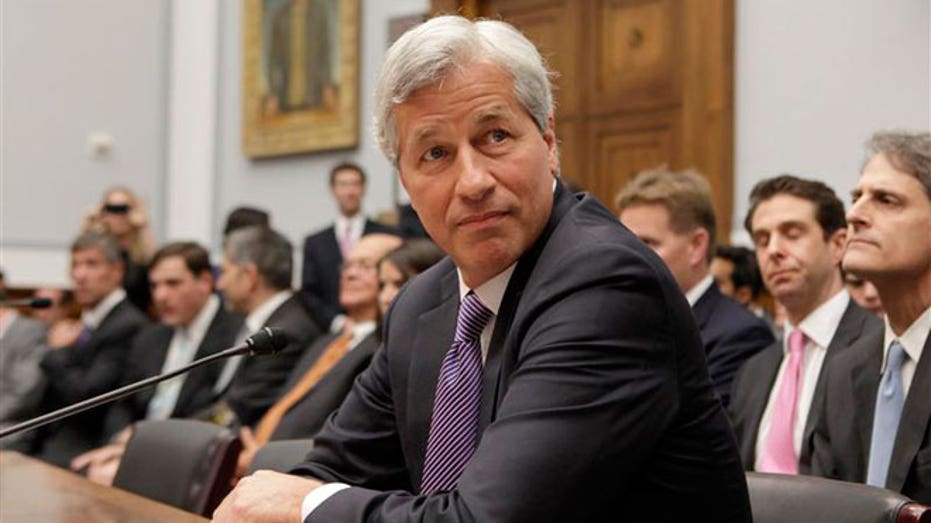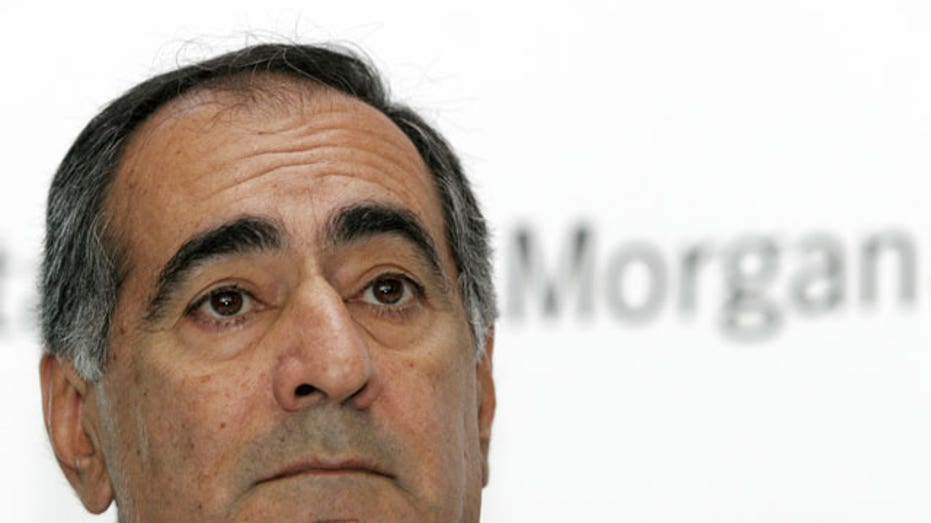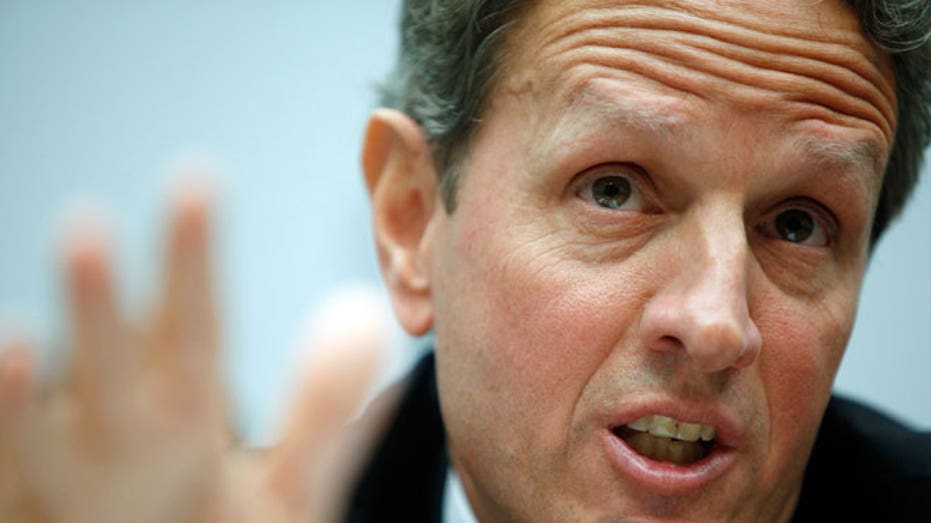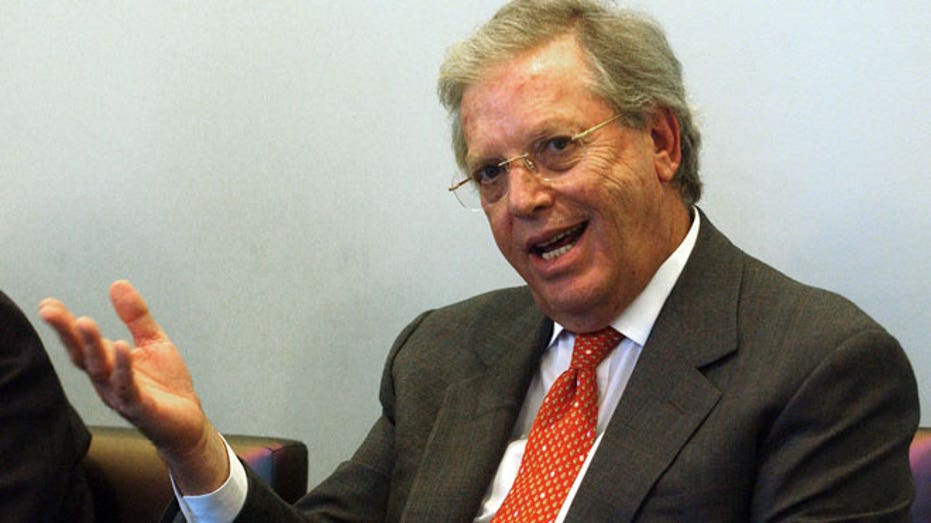Where Are They Now? Revisiting Key Players From '08 Crisis
The scariest financial crisis since the Great Depression turned many of the key players at the time into household names.
From regulators like Hank Paulson to banking chiefs like Dick Fuld, the ripple effects from these individuals’ actions can still be felt five years later in today’s sluggish economy.
While a few cast members from this larger-than-life play remain in their same roles, many have moved on to new jobs very much out of the limelight.
1. Lloyd Blankfein

Unlike almost all of his peers, Blankfein hasn’t had to binge on new business cards since the crisis.
Blankfein remains CEO of Goldman Sachs (NYSE:GS) and still serves as a symbol of Wall Street’s ability to bounce back even as much of the rest of the country struggles.
As his firm continues to rebound from its near-death experience, Blankfein is cleaning up. Last year the 58-year-old banker hauled in $26 million, making him the industry’s best-paid executive.
2. Dick Fuld

In many ways, Fuld, the former CEO of Lehman Brothers, became the face of the crisis. His investment bank’s implosion, and regulators’ refusal to rescue it, set off the Wall Street meltdown.
Fuld’s stake in Lehman, valued at as much as $900 million, was wiped out by the bankruptcy, but don’t feel too bad for him.
Fuld still took home as much as $529 million between 2000 and 2007 and is living comfortably in three lavish properties, including a mansion in Greenwich, Conn. and a 40-acre ranch in Sun Valley, Idaho, according to the Center for Public Integrity.
Once in charge of one of Wall Street’s biggest financial firms, Fuld now runs Matrix Advisors, he and his wife’s personal investment holding company.
3. Ben Bernanke

The chairman of the Federal Reserve finds himself in exactly the same position he was five years ago: as the most important person in finance.
But Bernanke no longer has the weight of the crisis on his shoulders and is likely in his final few months as Fed chief, with Janet Yellen seemingly poised to succeed him.
The Fed chief will surely be in the spotlight this week as the central bank is expected to dial back quantitative easing for the first time.
Bernanke, who studied the Great Depression as an academic at Princeton, has dropped few hints about his post-Fed plans.
4. Jamie Dimon

The CEO of JPMorgan Chase (NYSE:JPM) emerged from the ’08 debacle as the undisputed King of Wall Street. He was the government’s favorite banker, agreeing to take on troubled Bear Stearns and Wachovia.
But that storyline was gobbled up by the London Whale, the 2012 trading debacle that cost JPMorgan more than $6 billion and Dimon his reputation as a savvy risk manager.
Dimon narrowly survived a push by shareholders to demote him and his bank's profits are now being pressured by a mountain of legal and regulatory challenges.
5. Hank Paulson

The former Treasury Secretary played a pivotal role in 2008, begging Congress to enact the $700 billion TARP plan and then quickly deciding to buy up shares of banks rather than their toxic assets.
Paulson, former CEO of Goldman Sachs (NYSE:GS), seemed intent on making an example out of Lehman by letting the bank fail, much to the dismay of the markets.
Since leaving government when President Obama took office, Paulson has settled into academic life.
He served as a distinguished visiting fellow at Johns Hopkins University for a year and now chairs the Paulson Institute, a University of Chicago think tank that promotes “sustainable economic-growth and environmental preservation” in the U.S. and China.
6. John Thain

Still-remembered for his $35,000 commode, Thain orchestrated Merrill Lynch’s $50 billion sale to Bank of America (NYSE:BAC) to avoid succumbing to the crisis. The fallout was messy as BofA was saddled with billions in losses and countless lawsuits.
Thain has largely stayed out of the headlines, but in February 2010 he signed up to be the new chief of CIT Group (NYSE:CIT), which lends to middle-market companies. The bank's shares have soared about 61% since the hire, about in line with the S&P 500’s performance over that span.
7. John Mack

Morgan Stanley’s (NYSE:MS) future was hanging by a thread in the fall of 2008, with the investment bank believed to be the next domino to fall if the government didn’t step in.
Mack stayed at the helm of Morgan Stanley until January 2010, when he handed the CEO keys to James Gorman but remained chairman until January 2012.
No longer a rain maker at Morgan Stanley, Mack joined private-equity giant KKR (NYSE:KKR) in March 2012 as a senior adviser.
8. Vikram Pandit

The former Morgan Stanley executive had the thankless task of inheriting the top job at Citigroup (NYSE:C) from Chuck Prince in December 2007, just in time to see the banking system collapse.
Citi, and thus Pandit, drew ire for needing $45 billion in a pair of infusions in 2008, more than any other bank.
Pandit rode out the storm until October 2012 when the banking conglomerate’s board surprised Wall Street by showing him the door. Citi, whose share price plummeted 90% on Pandit’s watch, replaced him with current CEO Michael Corbat.
In May, Pandit and fellow Indian executive Hari Aiyar unveiled a deal to acquire a 3% stake in Mumbai-based bank JM Financial and for Pandit to launch a $100 million fund to invest in distressed assets.
9. Tim Geithner

As president of the New York Fed, Geithner was at the center of the ’08 meltdown and has been criticized for his role in the controversial bailout of AIG (NYSE:AIG).
After stumbling in his debut, Geithner served four years as Treasury secretary in the Obama administration and was credited with rolling out stress tests that helped stem the panic in 2009.
Despite ample speculation about a potential gig at Citigroup (NYSE:C) or even as Fed chief, Geithner has kept a mostly low-profile in recent months, working on a forthcoming memoir, Stress Test, about his public-sector work.
Geithner has also been hauling in hefty speaking fees, netting about $400,000 for three speaking engagements in recent months, according to the Financial Times.
10. Jimmy Cayne

The former CEO of Bear Stearns, whose $1 billion stake in the investment bank was wiped out by the crisis, has been criticized for allegedly playing cards, smoking pot and hitting the links while his firm imploded.
With help from the Fed, Bear Stearns was rescued by JPMorgan in March ’08, forestalling the “Lehman moment” that occurred just six months later.
Cayne didn’t let that experience ruin his love for cards. According to standings posted earlier this month by the American Contract Bridge League, Cayne ranks as the card game’s 23rd best player of the decade.
11. Sheila Bair

The former chair of the Federal Deposit Insurance Corp. emerged from the crisis with a reputation for speaking her mind and tangling with fellow regulators (see: Geithner).
Bair, who led the FDIC between 2006 and 2011, published a book last year, Bull by the Horns, that detailed her vantage point of the crisis and struggle to reform the system afterwards.
She's also been a prominent voice in the media, recently telling The Wall Street Journal "our system is still somewhat fragile," and penning a column in Fortune throwing her weight behind Yellen, noting she's not part of the “deregulatory cabal” that “got us into the 2008 financial crisis.”



















